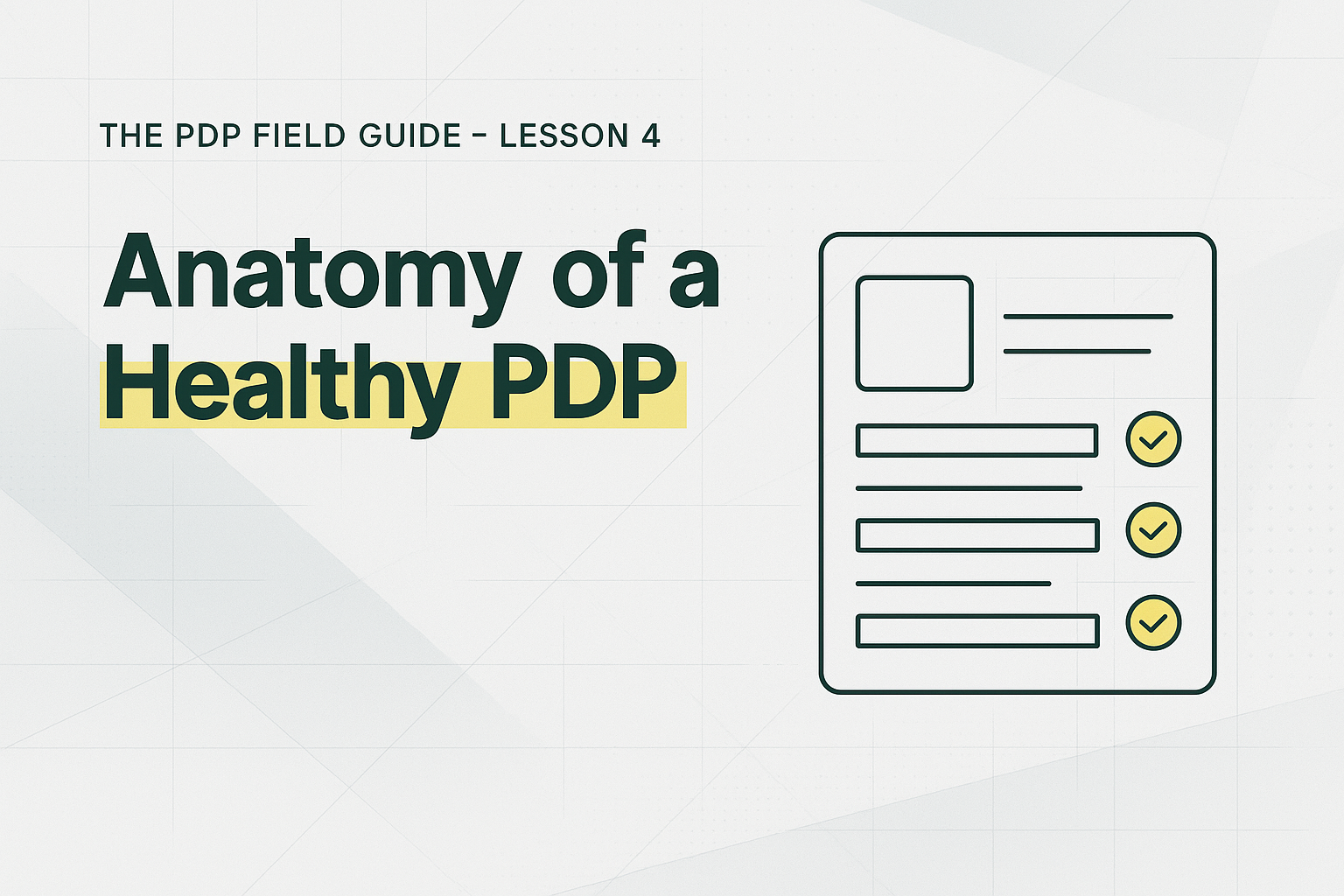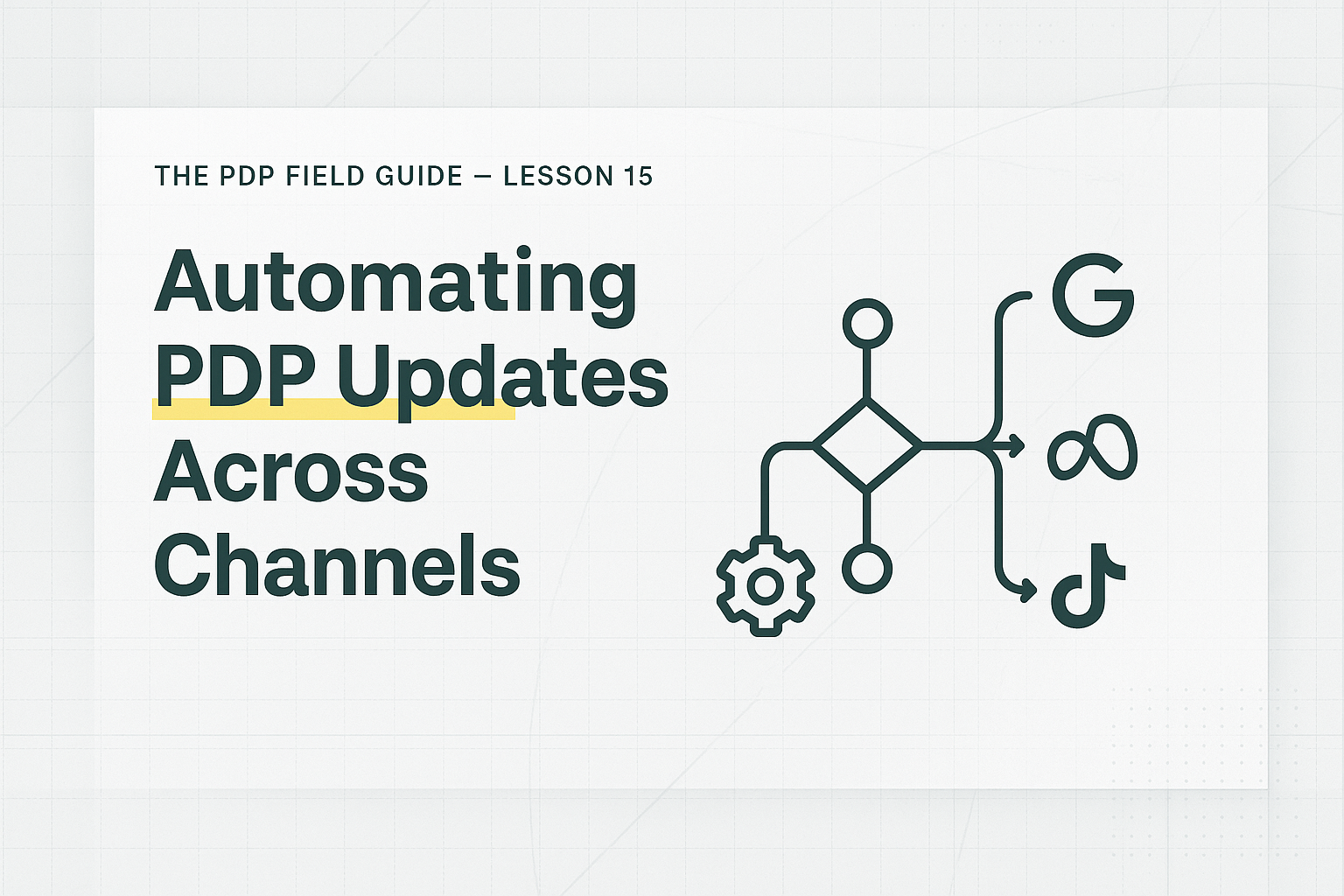.png)

The Anatomy of a Perfect Product Page

⚡️ TL;DR
- Every product page has two sides: content + metadata
- Content = shopper-facing fields like titles, images, reviews, price
- Metadata = machine-readable fields like SKU, GTIN, availability, attributes
- Alignment drives trust, rankings, and sales
At a glance, a page looks simple: a title, an image, maybe some reviews. But underneath, a product page is the single source of truth that both shoppers and platforms depend on. Shoppers need clarity. Platforms need structure.
So what is a product page really made of? And how do you build one that actually works everywhere?
Two Sides of Every Product Page
A product page is not just copy and visuals. It has two distinct sides:
- Content (for humans): what shoppers see — the title, description, reviews, and price.
- Metadata (for machines): what platforms read — structured fields like SKU, GTIN, availability, and attributes.
Both sides must be complete and consistent. If one side is missing, you lose trust. Shoppers hesitate, and platforms exclude you.
The Content Side
The content side is everything a shopper needs to feel informed and confident:
- Clear, descriptive title — not just a brand name, but searchable context.
- Informative description — readable details about features and benefits.
- High-quality images and video — multiple angles, lifestyle context, alt text for accessibility.
- Reviews and ratings — social proof that drives conversion.
- Price, availability, and shipping info — critical buying signals that must be accurate.
This side is aesthetic and persuasive — it’s where trust is won or lost.
The Metadata Side
If the content side is the storefront, the metadata side is the foundation. It’s made up of structured fields that platforms use to validate, rank, and display products across search and feeds.
Core metadata includes:
- Identity & Classification: Title, Brand, SKU, GTIN, Category.
- Offer & Status: Price, Currency, Availability, Condition, Shipping.
- Media & Attributes: Images, Alt text, Color, Size, Material, Dimensions.
This metadata is organized in JSON-LD format so machines can read it reliably. Google’s own Search documentation recommends JSON-LD as the preferred format for product markup.
Without this structure, platforms have to guess from your copy — and guessing usually leads to invisibility.
Why Alignment Matters
The real power comes when content and metadata align.
- Shoppers see a page that feels complete and trustworthy.
- Platforms parse structured fields without errors or drift.
- Your products get included, ranked, and featured in feeds, search, and even AI-driven answers.
This alignment is the essence of PDP Health. A product page that balances human-facing content and machine-readable metadata isn’t just “pretty” — it’s discoverable, compliant, and revenue-generating.
Key Takeaways
- A product page is made of two halves: human-facing content and machine-facing metadata.
- The content side builds shopper trust. The metadata side builds platform trust.
- The best product pages balance both, creating a source of truth that works everywhere.
Building the perfect product page is not just about design — it’s about alignment. And alignment is what drives visibility, trust, and growth.


